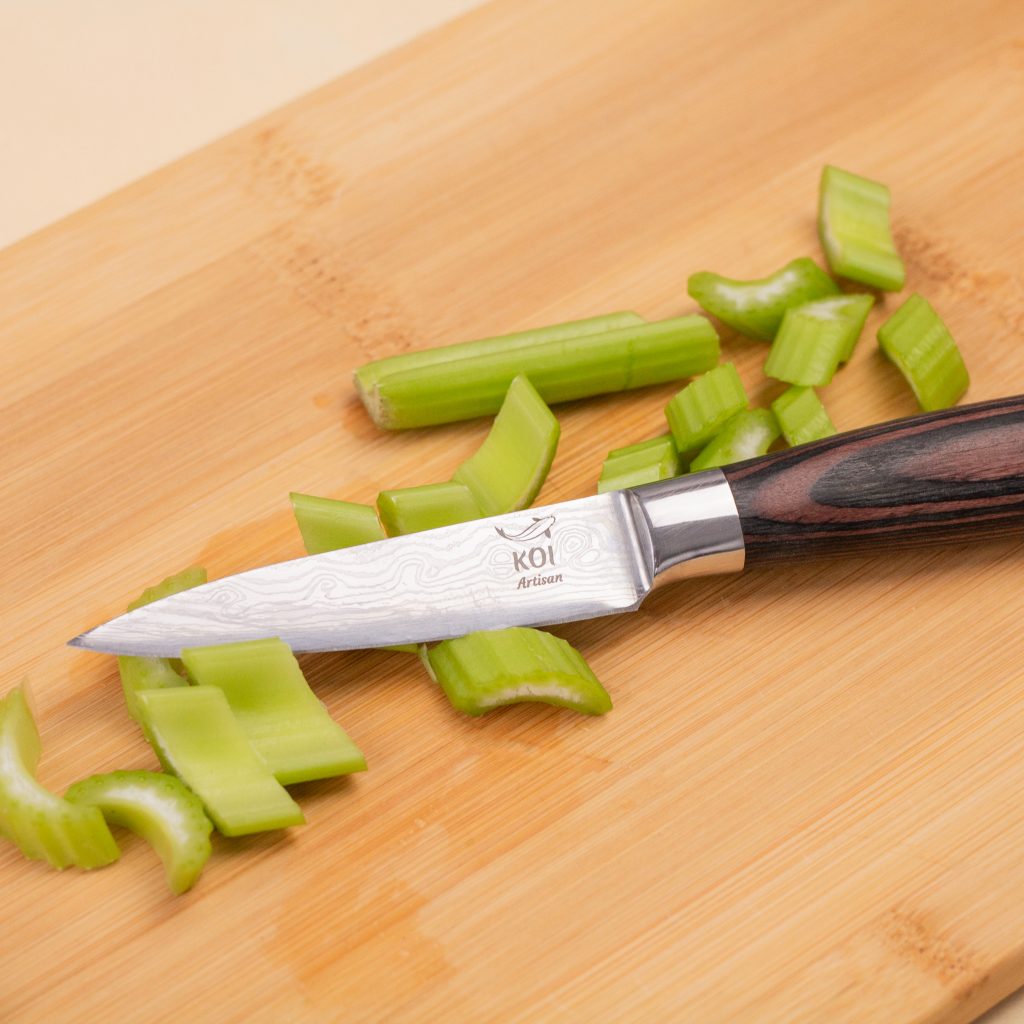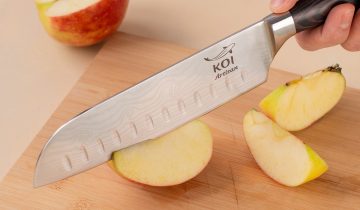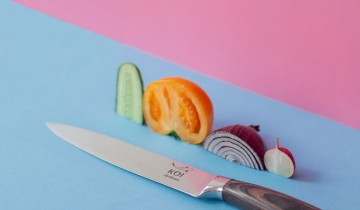What is Paring Knife Used for:
A paring knife is a small chef knife with a blade that measures 8–10 centimeters (3–4 inches) in length. Its small size makes routine activities like cutting, trimming, and slicing more easier and more precise.
Paring knives (also known as peeling knives) are extremely versatile and, as a result, are a staple of the professional kitchen. Many chefs use them to peel and cut fruit and vegetables into little pieces, as well as do other precision tasks.
The following is a list of some of the most typical uses for the trusty paring knife:
Removing seeds
Testing tenderness
Mincing herbs
Mincing herbs
Eyeing potatoes
Skinning mushrooms
Crushing garlic
Peeling
Slicing
Coring
Segmenting citrus fruit
Hulling strawberries
Trimming fat from meat
Carving small carcasses such as poultry
Testing tenderness of meat
De-veining prawns
Shucking oysters
Filleting small fish
Scoring meat
When purchasing a paring knife, there are various factors to consider.
Price
Brand
Shape and size of the blade
Materials used
Comfort and grip—how it feels in your hand
Read on to learn more about what’s involved in choosing a paring knife.

What types of paring knives are there?
When purchasing a paring knife, you will often have a choice of four types:
1. Spear point/spear tip paring knife
With its smooth, short, and outwardly curved blade, it’s sometimes referred to as the “traditional” paring knife. Allows the chef to use less pressure and let the knife do the heavy lifting.
A serrated knife is included with some spear point goods, allowing the cook to utilise a sawing action.
Peeling, slicing, and coring fruits and vegetables are the best uses for this tool.
Pros: Versatile knife that may be used for a variety of tasks.
Cons: Small slicing edge | Some less expensive knives may be too fragile for more demanding duties
2. Bird’s beak paring knife
Have a sickle-shaped concave blade with a razor-sharp tip.
Peeling and coring fruits and vegetables, trimming, and delicate decorative work are the best uses for this tool.
Pros: A rounded blade provides for a waste-reducing cut style.
Cons: Sharpening with an electric knife sharpener is difficult.

3. Sheep’s foot paring knife
Only the point of the blade contacts the board during the chop since it is smooth, flat, straight, and has a rounded tip.
Julienne cutting (slicing vegetables and fruits into long, thin strips), soft and hard cheese cutting
Pros: Stay sharper for a longer period of time
Cons: The rounded tip isn’t as sharp as other knife styles.
Pictured: Koi Artisan Paring Knife 9cm (£26.99)
4. Western-style Japanese paring knife
With a blade that is less curved than a spear point paring knife. Harder steel is typically used, resulting in a significantly sharper edge.
Best for: Intricate carving and cutting, as well as beautiful garnishing
Pros: Give yourself more control.
Cons: Razor-sharp, which can make certain tasks extremely dangerous | Expensive in general
How do you use a paring knife?
Paring knives can be used in two ways:
When used with a chopping board, paring knives have longer blades and resemble miniature chef’s knives.
Shorter paring knives and bird’s beak paring knives are used in this manner (for example, when peeling fruit) because they allow better control.
Plastic handles and stamped blades on some paring knives make them lighter and simpler to operate in the air. Stamped blade knives are also affordable.
Forged knives are heavier and more durable, making them ideal for chopping boards. They will, however, be more expensive than knives with stamped blades.
How do you hold a paring knife?
You must have perfect control over the blade; thus, a good grip is essential. When held in the hand, most paring knives are intended to sit securely in the palm of the hand and give balance and comfort.

You should be able to grip the handle of your paring knife in your fist and guide the blade with your thumb or index finger on the spine. As with larger chef’s knives, you steer the blade using the wrist rather than the heel of your hand.
An excellent paring knife has an ergonomically contoured handle that allows you to position your thumb comfortably while maintaining a strong hold.
A paring knife has a short, slim, evenly sized blade with a pointed tip. It tends to be light, to allow for easy handling during delicate work.



 No products in the cart.
No products in the cart.